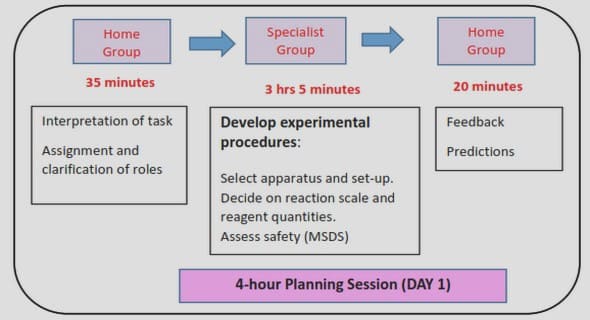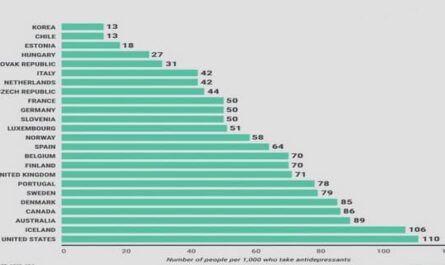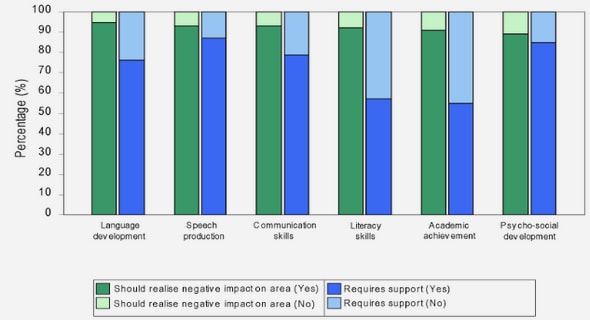Get Complete Project Material File(s) Now! »
Chemical shifts, and spin-spin couplings
The Hamiltonian 1.1 can be used for an isolated spin located in a magnetic field. However, nuclear spins in a chemical compound are almost never isolated. In a molecule, the nuclei are surrounded by electrons, which have an uninterrupted motion. This motion produces a secondary magnetic field, because electrons have an electrical charge, and their motion produces an electrical current. Therefore, in a chemical compound the nuclei interact not only with the external magnetic field but also with the secondary magnetic field arising from their surrounding electron cloud. The external static magnetic field affects the electrons’ motion, and the secondary magnetic field associated with it. The secondary magnetic field has often an opposite direction with respect to the external magnetic An overview of magnetic resonance imaging 5 field; i.e., the electron cloud surrounding a nucleus often acts like a “shield”. That is, the magnetic field sensed by a nucleus is often smaller than the external magnetic field. It turns out that this “shielding effect” is related to the density of the electron cloud, the denser the electron cloud the larger the shielding. For a nucleus positioned in an isotropic site the Hamiltonian is given by: H = ~(1 ):~B0 (1.6).
where is the shielding parameter, normally reported in ppm, and expresses the degree of shielding on each nucleus. In an anisotropic site, the shielding effects can be described by a 33 tensor. However, for liquids and gases, fast molecular rotation will average out all the anisotropies to zero. Therefore, in this case, the resonance frequency is determined only by the isotropic part of the shielding tensor , which is the average of the diagonal elements of the tensor. It worth mentioning that in liquids and gases, anisotropic effects can lead to relaxation, although the resonance frequency does not change.
Relaxation and Bloch equations
Using Eq. 1.2, it can be shown that a macroscopic magnetization (or the expectation value of a quantum mechanical spin operator) will undergo a precession around an external magnetic field. This precession is similar to the precession of a gyroscope, and its frequency, which is called the Larmor frequency, is given by !L = Bz0. According to Faraday’s law, precession of nuclear spins surrounded by a coil induces an alternating voltage in the coil, which is a common way to observe magnetic resonance. Fig. 1.13 shows a page from Bloch’s notebook, in which precession of spins with the Larmor frequency, and the alternating induced voltage are depicted. Felix Bloch published a paper in 1946 in which he described the “nuclear induction” phenomenon, by representing a set of equations explaining the properties of an NMR signal [21]. He distinguished between parallel and perpendicular components of the magnetization with respect to the magnetic field, by introducing two different relaxation times: the longitudinal relaxation time T1, that describes the rate by which the longitudinal component (parallel component) of the magnetization recovers to its thermal equilibrium; and the transverse relaxation time T2, characterising the rate at which the transverse components (perpendicular components) of the magnetization decay to zero. Using Eq. 1.2 and the aforesaid assumptions he derived the following equations called Bloch equations.
A short history of magnetic resonance imaging
In 1952, Herman Carr used a magnetic field gradient to create a one-dimensional (1D) spectrum or image [29, 30]. In the Soviet Union, Vladislav Ivanov filed a document to the State Committee for Inventions and Discovery in Leningrad proposing that one may use magnetic resonance to study the interior parts of a human body [31], the idea which was approved in the 1970s. In 1971 Raymond Damadian, who was an associate professor of medicine at the State University of New York, used NMR relaxation times to distinguish between normal tissues and malignant tumours [32]. He demonstrated that cancerous cells have longer T1 and T2 relaxation times than normal cells [32]. Later in 1972 he filed a US patent entitled “Apparatus and method for detecting cancer in tissue” [33]. By 1977, he and his team could construct the first full-body MRI scanner, which was based on the “sensitive point” method [34]. Although the scanner was based on the main principles of NMR, it was more or less similar to CW-NMR machines. He used a saddle-shaped magnet which had a localizing property. Since the magnetic field of such a magnet is not homogeneous, only a small volume of spins located at the centre of the magnet are in resonance at any time. Under such conditions, the observed signal exclusively comes from a small area of the body. To obtain the signal of whole body, the patient must be moved so that the scanner covers the whole body. Damadian called this method “field-focused NMR” [35, 36]. Later he incorporated the “FONAR” company, the first manufacturer of commercial MRI scanners. Because “field-focused NMR” was too slow, it was soon replaced by more recent imaging techniques.
Projectional magnetic resonance tomography
In 1973, Paul Lauterbur who was a chemist working at the State University of New York at Stony Brook published an MR image obtained by a method he named “zeugmatography” [37]. He placed two 1-mm-diameter tubes in a 1.4 T magnetic field. By applying a magnetic field gradient at different orientations, he recorded 1D NMR spectra at 4 different directions of a field gradient that was rotated in steps of 45. The subsequent mathematical “back-projection”4 of the raw data leads to an MR image. In Greek “zeugma” means “what is used to join”, and the reason why Lauterbur named this method zeugmatography is that it depends on the joint effects of two magnetic fields. Shortly after, Lauterbur produced the first image of a living animal, a tiny clam [38].
The effects of diffusion on NMR signals
The effect of molecular diffusion on NMR signals has been widely studied [66]. In 1950 E. L. Hahn realised that to explain the attenuation of spin echoes in some samples, the effects of diffusion of the molecules through an inhomogeneous magnetic field has to be taken into account [67]. Later in 1954, using random walk theory, H. Y. Carr and E. M. Purcell reformulated Hahn’s analysis, and obtained a relation similar to what H. C. Torrey obtained two years later [68]. In 1956 Torrey combined Bloch’s and diffusion equations, and obtained the following equation connecting the attenuation of the signal for a spin echo formed in an inhomogeneous magnetic field [69].
Table of contents :
Acknowledgements
Abstract
List of abbreviations
Résumé
Summary
1 An overview of magnetic resonance imaging
1.1 A short history of nuclear magnetic resonance
1.2 Basic theory of nuclear magnetic resonance
1.2.1 Basic interactions
1.2.2 Chemical shifts, and spin-spin couplings
1.2.3 Relaxation and Bloch equations
1.3 A short history of magnetic resonance imaging
1.3.1 Projectional magnetic resonance tomography
1.3.2 Slice-selection and line-scanning
1.3.3 Fourier NMR imaging and k-space
1.4 Non-Fourier MRI techniques
1.4.1 Hybrid imaging techniques
1.4.2 Cross-encoding
2 The effects of diffusion in spatially encoded magnetic resonance imaging
2.1 Diffusion: a short introduction
2.1.1 Fick’s laws
2.1.2 Unrestricted diffusion
2.1.3 The effects of diffusion on NMR signals
2.1.4 Restricted diffusion, and apparent diffusion coefficient
2.2 Levelling the effects of molecular diffusion in spatially encoded magnetic resonance imaging
2.2.1 Introduction
2.2.2 Theory
2.2.3 Experimental
2.2.4 Results and discussion
2.2.5 Concluding remarks
3 Contrast enhancement by echo shifting in spatially encoded single-scan MRI
3.1 Types of contrast available in traditional Fourier MRI
3.2 Types of contrast available in spatially encoded MRI
3.3 Theory
3.3.1 Contrast enhancement
3.4 Experimental
3.5 Results and discussion
3.5.1 Enhanced contrast
3.5.2 Informative maps
3.5.3 Concluding remarks
4 Alternative sequences for single-scan time-encoding MRI
4.1 Gradient switching rate in available single-scan techniques
4.2 Modifications on the original hybrid time-encoding sequence
4.2.1 Uniform echo time
4.2.2 Reducing the gradient switching rate
4.2.3 Interleaved spin-packet-selection
4.3 Experimental
4.4 Results and discussion
4.4.1 Interleaving
4.4.2 The effects of excitation pulses with different shapes
4.4.3 Overlapping excitation pulses
4.4.4 Time-encoding sequence with uniform susceptibility effects .
4.4.5 Importance of the coincidence of echoes
4.4.6 Concluding remarks
Bibliography


